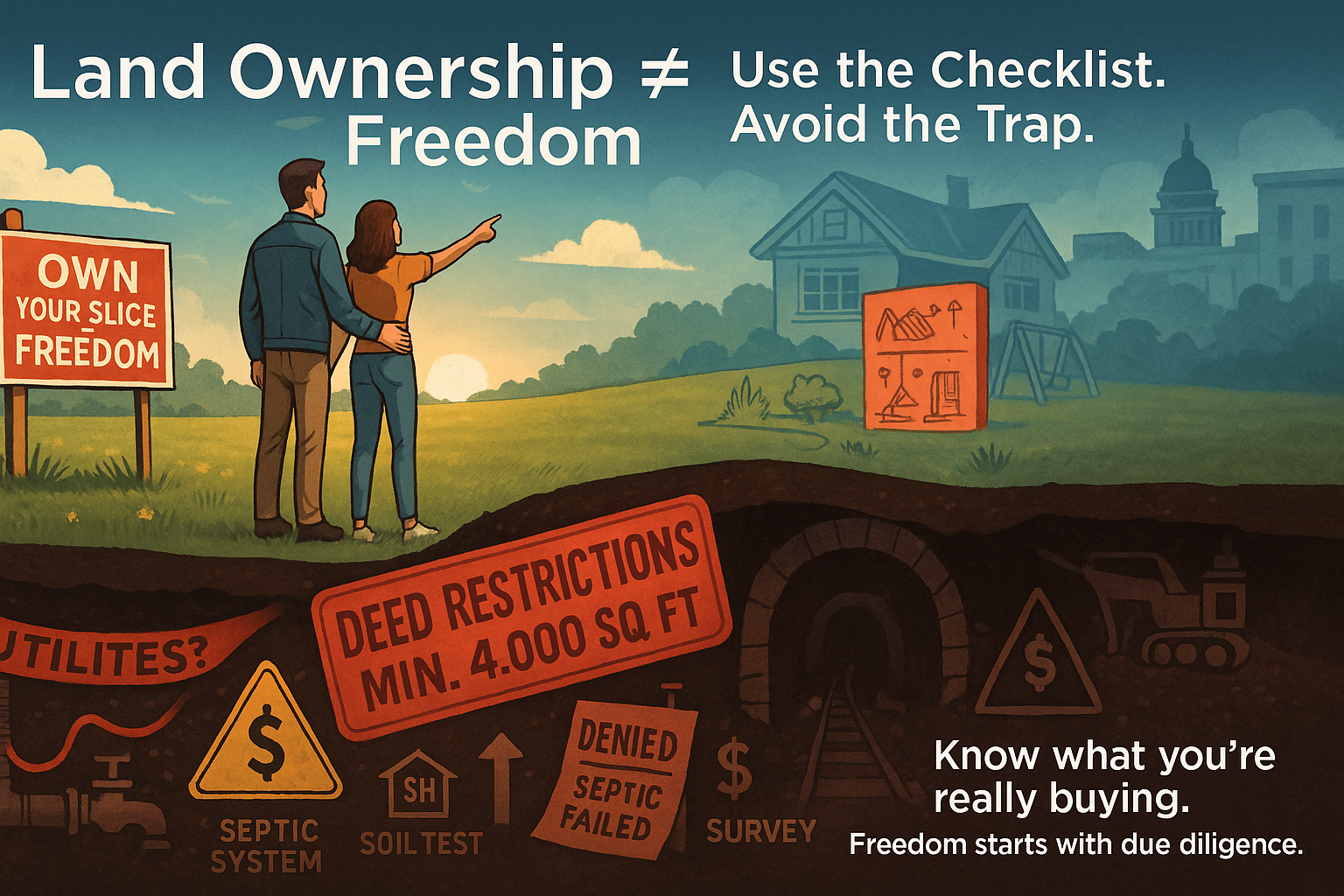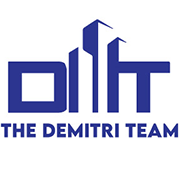
Beyond Land Ownership Your Must Know Checklist
The first question we ask land buyers isn't about their dreams. It's about their cash.
Most people approach raw land purchases the same way they buy houses. They assume financing works the same way, restrictions are minimal, and ownership equals freedom.
They're wrong on all three counts.
Raw land operates by different rules. Lenders typically cap financing at 50% for unimproved land, and that's only for exceptional properties. The rest requires cash upfront.
But financing is just the beginning of what catches buyers off guard.
The Ownership Paradox
Legal title doesn't guarantee freedom of use. You can own land and still face severe restrictions on what you can actually do with it.
We've seen buyers discover they must build 4,000 square foot homes when they planned for 2,000 square feet. Deed restrictions can double your construction budget overnight.
The land becomes a financial boat anchor instead of a foundation for freedom.
This happens because buyers confuse ownership with control. You might hold the deed, but multiple parties often hold various rights to your property.
What Makes Land Financeable
Lenders evaluate raw land through their foreclosure lens. They ask: "If we have to take this back, can we recover our money?"
Location drives everything. Waterfront properties, golf course lots, or the last available parcel in a multi-million dollar neighborhood get better financing terms.
The uniqueness factor matters because it reduces the lender's risk. If comparable properties sell for high prices, banks feel safer lending more than the standard 50%.
But even with favorable financing, the real costs emerge after purchase.
Three Critical Verification Areas
Beyond deed restrictions, three areas consistently catch land buyers unprepared.
First: Utility access costs. Getting electricity, water, internet, or cable to remote property can cost tens of thousands. Some locations simply can't access certain utilities at any price.
Second: Sewage solutions. Public sewer connections require expensive hookup fees. Septic systems need soil that can handle drain fields. Some land fails percolation tests entirely.
Third: Rights below, above, and around your property. Just because you see empty land doesn't mean you own everything.
Mineral rights get sold separately from surface rights. The mineral rights owner can exercise their claims later, installing mining equipment in your front yard.
Your property value and enjoyment disappear overnight.
The Buyer Beware Reality
Every transaction operates on buyer beware principles. You cannot hold sellers or listing agents accountable for restrictions you failed to discover.
Your responsibility extends to confirming every detail, even information provided by professionals. We point buyers toward verification sources, but they must do their own due diligence.
This approach protects everyone involved while ensuring buyers make informed decisions.
The complexity requires systematic investigation across multiple areas.
Your Complete Due Diligence Framework
Start with financing pre-approval. Know your cash requirements before property shopping. This prevents emotional decisions on properties you can't afford.
Verify property boundaries through professional surveys. Don't rely on approximate measurements or seller representations.
Research all deed restrictions and covenants. These documents control building size, architectural requirements, and property use limitations.
Investigate utility availability and connection costs. Contact each utility company directly for service availability and hookup fees.
Determine sewage solutions. Check public sewer availability or soil suitability for septic systems through percolation testing.
Examine all rights transfers. Confirm you're purchasing surface rights, mineral rights, water rights, and air rights. Verify no easements or encroachments affect your intended use.
Review regulatory oversight. Multiple jurisdictions (county, city, state, federal) can restrict land use regardless of deed terms. Environmental regulations, zoning laws, and building codes all apply.
Secure proper insurance coverage. Title insurance protects against ownership disputes. Liability coverage protects against accidents on your property.
The Freedom vs. Regulation Tension
The movement toward raw land ownership grows as people seek personal freedom. Simultaneously, regulatory complexity increases as governments expand oversight.
This creates friction between buyer expectations and legal reality. What feels like private property often involves multiple stakeholders with competing interests.
Understanding this tension helps set realistic expectations for land ownership.
Making Informed Decisions
Raw land purchases require more due diligence than traditional real estate transactions. The stakes are higher because financing options are limited and mistakes are expensive.
A comprehensive checklist ensures you verify every critical element before closing.
The goal isn't to discourage land ownership. It's to ensure buyers understand exactly what they're purchasing and can use their property as intended.
Real freedom comes from making informed decisions with complete information. The checklist approach provides that foundation.
When you know what you're buying, land ownership can deliver the freedom and stability you're seeking. When you don't, it becomes the financial boat anchor that sinks your dreams.
The choice is yours. The checklist makes it possible.
